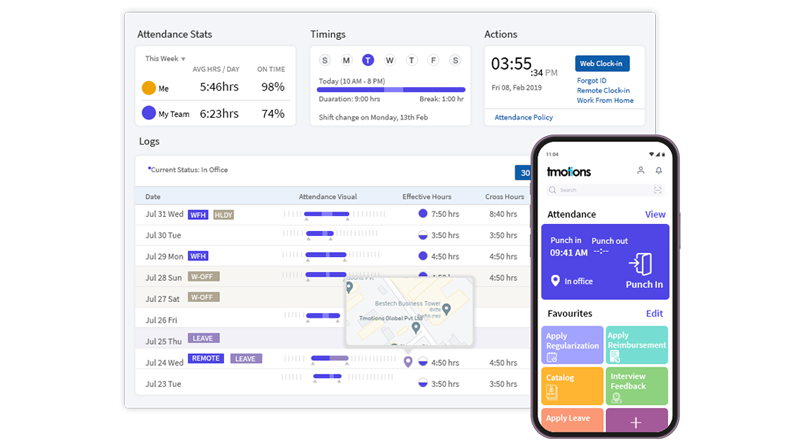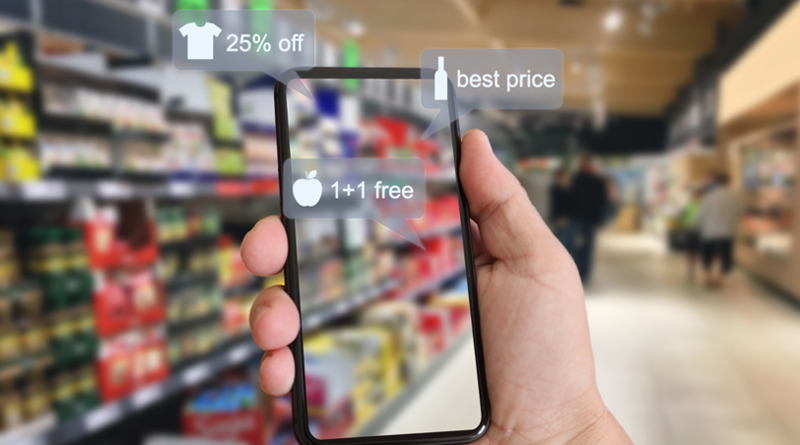Effective time and attendance management forms the foundation of any successful business. However, for numerous years, it has posed a considerable challenge for workforce managers, HR professionals, and payroll departments. Handling numerous employees and intricate schedules has often led to problems, impacting employee morale and job satisfaction.
Importance of Time Attendance Systems in Enterprises
In today’s fast-paced and dynamic business environment, effective time management is crucial for the success of enterprises. One essential tool that aids in this endeavor is the time attendance system. Time attendance systems play a pivotal role in accurately tracking and managing employee work hours. Also, providing numerous benefits to organizations of all sizes. Let’s delve into the importance of time attendance systems in enterprises and how they contribute to operational efficiency and productivity.
Furthermore, time attendance systems enable data-driven decision making. The data collected by these systems provides valuable insights into workforce patterns, attendance trends, and productivity levels. Organizations can leverage this information to optimize workforce planning, identify areas of improvement, and make informed decisions regarding resource allocation and scheduling adjustments. Data-driven decision making allows enterprises to operate more efficiently and make strategic choices that positively impact the bottom line.
Discover the Power of Drupal 10 | Navigating the Drupal 9 End-of-Life | Maximizing GA4
How Cloud Technology Works in Time and Attendance Management
Cloud technology in time and attendance management works by leveraging remote servers and the internet to store, manage, and process time-related data. The traditional approach to time and attendance involves using on-premises hardware and software, which can be costly and limited in scalability. In contrast, cloud-based time and attendance systems offer numerous advantages through their efficient and flexible architecture.
Here’s a breakdown of how cloud technology works in time and attendance management:
-
-
Data Storage
Instead of storing data on local servers or physical time clocks, cloud-based systems store all the time and attendance data on remote servers owned and maintained by a cloud service provider. These servers are located in secure data centers with robust infrastructure and advanced security measures.
-
Accessibility
Authorized users, such as managers, HR personnel, and employees, can access the cloud-based time and attendance system from anywhere with an internet connection. This accessibility enables remote and mobile workforce management, allowing employees to clock in and out or request time off through various devices like computers, tablets, or smartphones.
-
Data Collection
Cloud-based time and attendance systems use various methods to collect time-related data, such as biometric time clocks, proximity cards, web-based timesheets, mobile applications, or even integration with access control systems. The collected data is transmitted securely to the cloud servers in real-time.
-
Data Processing
The cloud-based system processes the incoming time data and applies the configured rules and policies, such as overtime calculations, shift differentials, and attendance rules. The data processing is usually automated, which reduces the need for manual intervention and minimizes errors.
-
Integration
Cloud-based time and attendance systems can seamlessly integrate with other HR and payroll software, such as HRIS (Human Resource Information System) and payroll processing systems. This integration ensures that accurate time data flows effortlessly into payroll processes, streamlining the entire HR and payroll management cycle.
-
Scalability
Cloud technology offers scalability that traditional on-premises solutions may lack. Businesses can easily adjust their time and attendance system’s capacity to accommodate fluctuations in the workforce size or adapt to changing business needs without the need for additional physical infrastructure.
-
Security
Cloud service providers implement advanced security measures to protect the data stored on their servers. This includes data encryption, secure access controls, regular backups, and robust disaster recovery mechanisms, ensuring the integrity and confidentiality of sensitive employee information.
-
Updates and Maintenance
Cloud-based systems typically receive regular updates and maintenance from the service provider, ensuring that the software remains up-to-date with the latest features, functionalities, and security patches. This reduces the burden on the organization’s IT department and ensures a reliable and efficient system.
-
Streamlining Workforce Management for Construction Enterprises | Power of Accessibility Testing
Benefits Of Integrating Cloud-Based Time Attendance Systems With HRMS
Integrating cloud-based time attendance systems with HRMS (Human Resource Management System) offers several benefits that enhance accuracy, automation, and streamline various HR processes. Here are the key advantages of this integration:
1. Enhanced Accuracy and Automation in Attendance Tracking
– By integrating the time attendance system with HRMS, employee attendance data is automatically captured and recorded in real-time, reducing the risk of errors and inaccuracies associated with manual data entry.
– Automation of attendance tracking eliminates the need for manual timesheets or punch cards, saving time and minimizing administrative effort.
2. Real-time Data Access and Reporting Capabilities
– Integrating cloud-based time attendance systems with HRMS enables instant access to real-time attendance data.
– HR personnel and managers can view up-to-date attendance records, monitor employee punctuality, and track absenteeism in real-time, facilitating prompt intervention when necessary.
3. Streamlined Payroll Processing and Compliance
– Integration between time attendance systems and HRMS simplifies the payroll process and ensures accuracy in wage calculations.
– Attendance data captured by the time attendance system seamlessly flows into the HRMS, eliminating the need for manual data entry and reducing the risk of errors.
4. Improved Efficiency and Productivity
– Integrating cloud-based time attendance systems with HRMS reduces manual administrative tasks associated with attendance tracking, data entry, and payroll processing.
– Automation and real-time data accessibility free up HR personnel’s time, allowing them to focus on more strategic HR initiatives.
5. Seamless Data Integration and Employee Self-Service
– Integrating time attendance systems with HRMS enables seamless data synchronization between the two systems.
– Employee data, such as personal information, job titles, and departments, is synchronized, ensuring consistency across systems and reducing the need for duplicate data entry.
Leveraging the Metaverse for Business Success | How Food Went High Tech | Immersive eCommerce is Here
Integration with Payroll and HR Systems
Integration with Payroll and HR Systems is a crucial advantage of cloud-based time and attendance management. By seamlessly connecting the time and attendance system with payroll and HR software, businesses can unlock several benefits:
-
Streamlined Payroll Processing with Accurate Time Data
Cloud-based time and attendance systems automatically capture and process employees’ work hours, breaks, and leaves in real-time. This accurate and reliable time data is seamlessly integrated into the payroll system, eliminating the need for manual data entry and significantly reducing the potential for errors. As a result, payroll processing becomes faster, more efficient, and highly accurate, ensuring that employees are paid correctly for their hours worked, overtime, and any other wage adjustments.
-
Improved HR Decision-Making Through Integrated Data Analytics
By integrating time and attendance data with HR systems, businesses gain access to a wealth of valuable insights and analytics. HR professionals can analyze employee attendance patterns, absenteeism rates, and time-off trends, among other metrics. This data-driven approach empowers HR teams to make informed decisions about workforce planning, scheduling, and resource allocation. It also helps identify areas for improvement, such as addressing chronic absenteeism or optimizing staffing levels during peak periods.
Overall, the integration of time and attendance with payroll and HR systems fosters a more seamless and efficient approach to managing human resources. It not only streamlines payroll processes but also empowers HR professionals with data-driven decision-making capabilities to enhance workforce productivity, compliance, and employee satisfaction. These advantages make cloud-based time attendance systems an invaluable asset for modern enterprises aiming to optimize their HR operations and stay competitive in a dynamic business environment.
The Ultimate Guide To ChatGPT | Leveraging Big Data in Ecommerce | NopCommerce | Winning at B2B Commerce
Key Considerations For Choosing a Cloud-based Time Attendance System
When choosing a cloud-based time attendance system, it’s essential to consider several key factors to ensure you select the right solution for your organization’s needs. Here are some important considerations to keep in mind:
1. Ease of Use and User Experience
– The system should have an intuitive user interface that is easy for both administrators and employees to navigate.
– Look for features such as self-service functionality and user-friendly interfaces to facilitate employee engagement and adoption of the system.
2. Integration Capabilities
– Consider the compatibility and integration options with your existing HRMS, payroll software, or other relevant systems. Seamless integration ensures smooth data flow and eliminates the need for duplicate data entry.
– Verify if the system has APIs or pre-built integrations with popular HR and payroll solutions, allowing for seamless data synchronization.
3. Data Security and Compliance
– Security is paramount when dealing with sensitive employee data. Ensure the system employs robust security measures such as data encryption, access controls, and regular backups.
– Check if the provider adheres to industry security standards and regulations, such as GDPR or HIPAA, to ensure compliance and data protection.
4. Reporting and Analytics
– Look for robust reporting and analytics capabilities to gain insights into attendance trends, overtime usage, and other relevant metrics.
– Evaluate whether the system provides customizable reports, real-time data access, and visualization tools to facilitate informed decision-making and strategic workforce planning.
Tmotion’s cloud-based Time Attendance System
Our state-of-the-art attendance management system – your comprehensive tool for accurate login times, effortless leave tracking, and insightful statistics on your managerial team.
Enjoy a seamless experience and drive performance through transparency and accountability, making team management simpler and more efficient than ever before.
Welcome to the future of workforce management!

Top Drupal 9 Features | Power Up your B2B eCommerce with Search | Microsoft Dynamics 365 For Sale
Future Trends in Cloud-Based Time Attendance Systems
As technology continues to evolve, cloud-based time attendance systems are expected to undergo several advancements and incorporate innovative features. Here are some future trends that are likely to shape the landscape of cloud-based time attendance systems:
-
Cloud-Based Biometric Authentication and Security Advancements
Biometric authentication methods, such as facial recognition, fingerprint scanning, or iris scanning, will become more prevalent in cloud-based time attendance systems. These technologies offer enhanced security by ensuring that only authorised employees can clock in or access sensitive data. Cloud-based biometric authentication also enables businesses to maintain a centralised and secure biometric database, eliminating the need for separate hardware at each location.
-
Enhanced Employee Self-Service Capabilities
Future cloud-based time attendance systems will empower employees with self-service capabilities. Employees will have the ability to view their work schedules, request time off, manage shift swaps, and access their time and attendance data in real-time. This self-service approach reduces administrative burdens on HR and supervisors while increasing employee engagement and satisfaction.
-
Real-Time Reporting and Data Visualisation
Cloud-based time attendance systems will offer more sophisticated reporting and data visualisation tools. Real-time dashboards and customisation reports will enable managers and HR professionals to monitor attendance trends, track key performance indicators, and make data-driven decisions quickly and efficiently.
Conclusion
In conclusion, cloud-based solutions have transformed the future of time tracking in enterprises, offering numerous advantages over traditional methods. The flexibility, accessibility, and advanced features provided by cloud-based time tracking systems have reshaped the way organisations manage employee attendance. As technology continues to evolve, the future of time tracking in enterprises will be heavily influenced by cloud-based solutions.
Connect with our experts to get free consultation!!
Digital Transformation | NopCommerce vs Magento | Microsoft Dynamics 365 and nopCommerce












